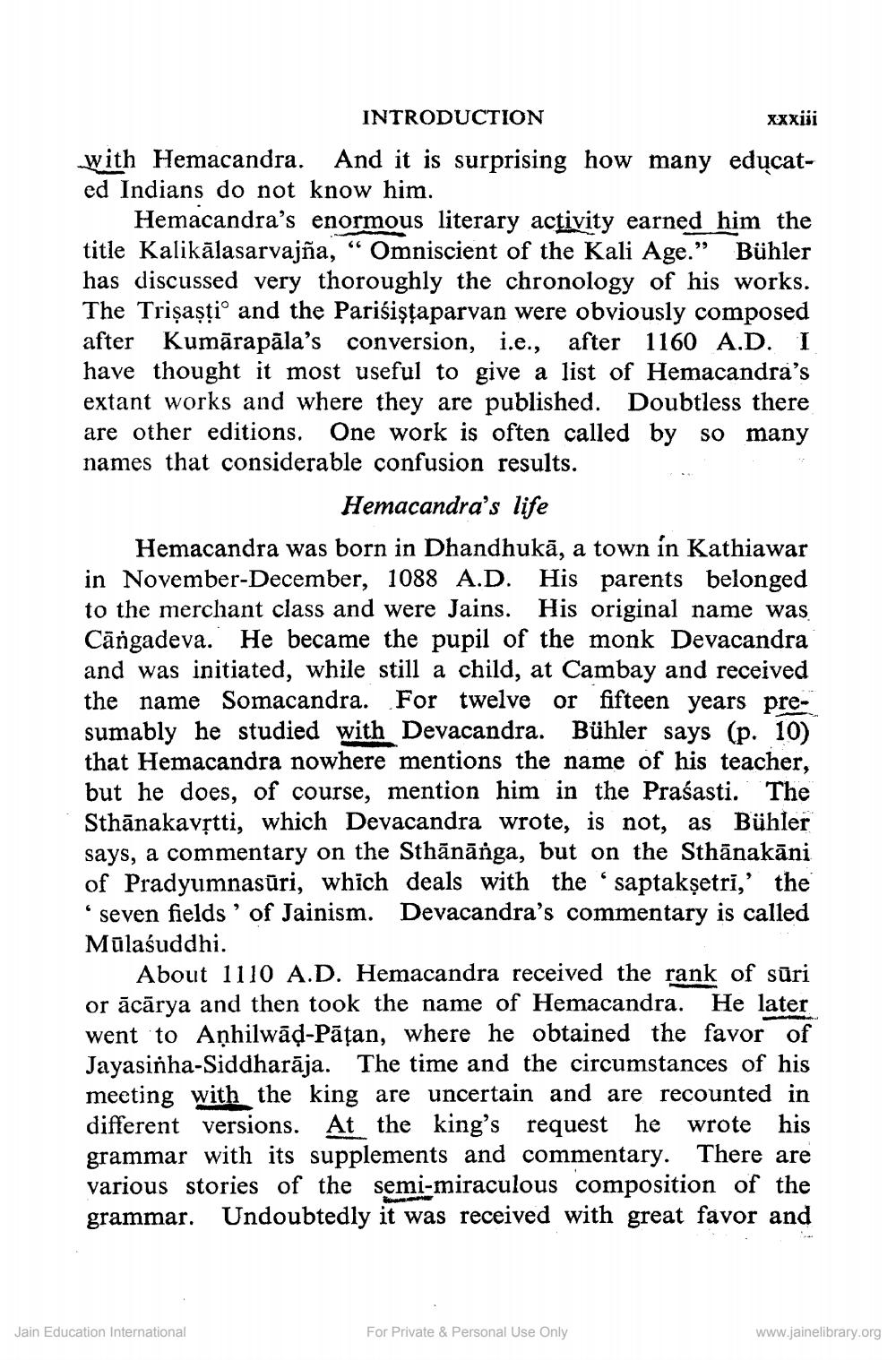________________
INTRODUCTION
with Hemacandra. And it is surprising how many educated Indians do not know him.
66
Hemacandra's enormous literary activity earned him the title Kalikālasarvajña, Omniscient of the Kali Age." Bühler has discussed very thoroughly the chronology of his works. The Trişaşti and the Parisişṭaparvan were obviously composed after Kumarapala's conversion, i.e., after 1160 A.D. I have thought it most useful to give a list of Hemacandra's extant works and where they are published. Doubtless there are other editions. One work is often called by so many names that considerable confusion results.
xxxiii
Hemacandra's life
Hemacandra was born in Dhandhukā, a town in Kathiawar in November-December, 1088 A.D. His parents belonged to the merchant class and were Jains. His original name was Cangadeva. He became the pupil of the monk Devacandra and was initiated, while still a child, at Cambay and received the name Somacandra. For twelve or fifteen years presumably he studied with Devacandra. Bühler says (p. 10) that Hemacandra nowhere mentions the name of his teacher, but he does, of course, mention him in the Prasasti. The Sthanakavṛtti, which Devacandra wrote, is not, as Bühler says, a commentary on the Sthanānga, but on the Sthānakāni of Pradyumnasūri, which deals with the saptakṣetri,' the seven fields' of Jainism. Devacandra's commentary is called Mulaśuddhi.
6
6
He went there is noth
About 1110 A.D. Hemacandra received the rank of sūri or ācārya and then took the name of Hemacandra. He later went to Aṇhilwaḍ-Patan, where he obtained the favor of Jayasinha-Siddharāja. The time and the circumstances of his meeting with the king are uncertain and are recounted in different versions. At the king's request he wrote his grammar with its supplements and commentary. There are various stories of the semi-miraculous composition of the grammar. Undoubtedly it was received with great favor and
Jain Education International
For Private & Personal Use Only
www.jainelibrary.org




